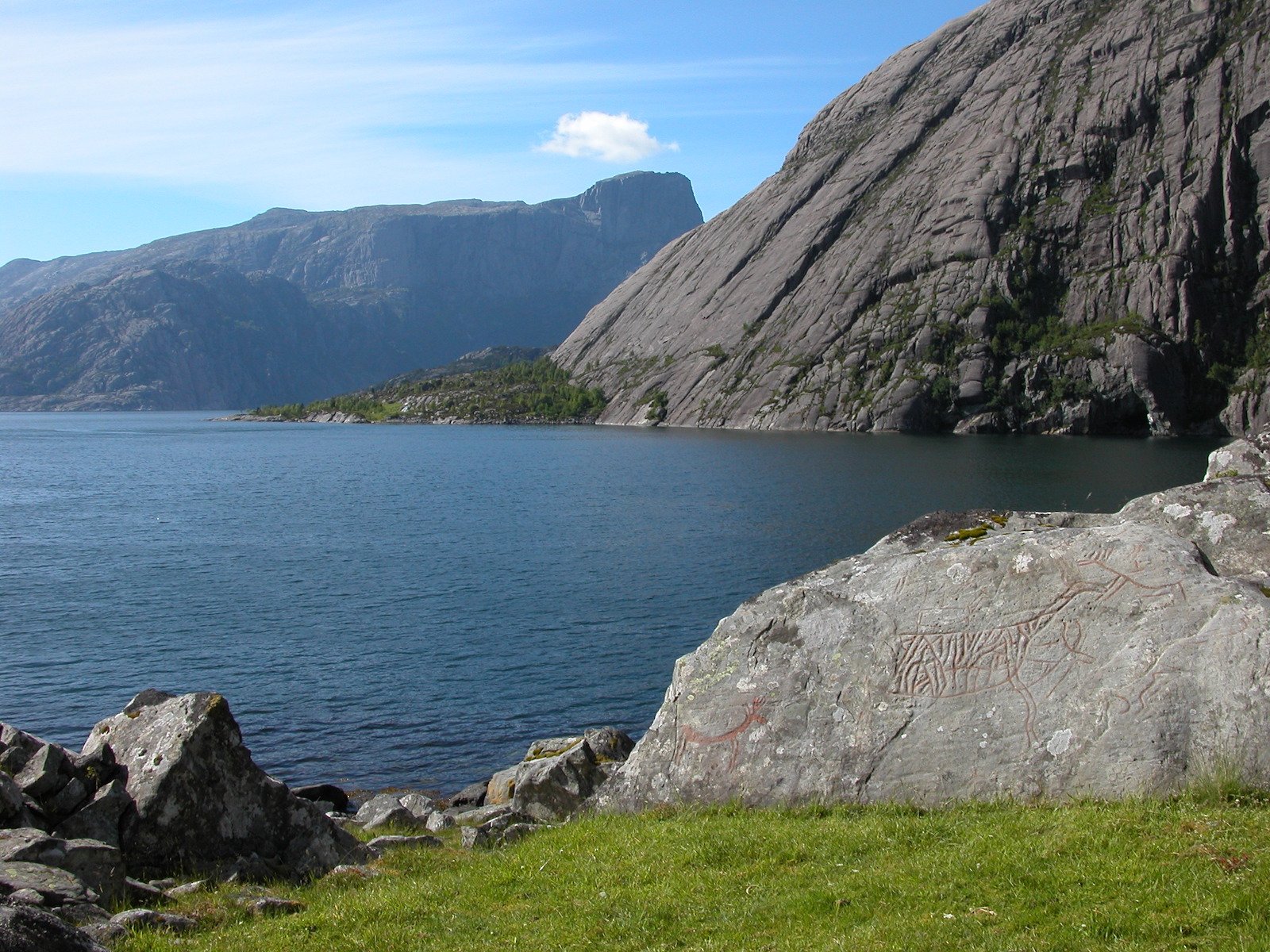
A massive site for ancient rock art in Norway, containing thousands of carvings and one of the most extensive and significant in northern Europe, is under threat from nearby industrial development, according to experts who are raising the alarm.
The Vingen carvings, in Norway’s Vestland county, date to the late Mesolithic period, between 6,000 and 7,000 years ago. The remote site around them has not been developed, and so it remains very much as it was when the people who created the petroglyphs lived there. New discoveries were “constantly” being made as recently as 2016 at the site, around a small fjord, according to a 2016 paper by Trond Lødøen, associate professor of archaeology at Norway’s University Museum of Bergen, in the journal Cuadernos de Arte Repestre.
The imagery consists predominantly of red deer, human skeletons, animal headed staffs, and some sea mammals, Lødøen said in an email, as well as some images that are not yet fully interpreted or understood. There are more than 300 “panels” of artworks, he said.
The site has also revealed traces of dwellings, some of which contain small rocks bearing similar imagery, suggesting they are contemporaneous with the larger carvings. Tools used by the creators have survived as well, providing yet more information.
The Vingen rock art site, with renderings of some of the petroglyphs there. Photo courtesy Trond Lødøen.
Over objections from organizations like the National Antiquities Office and the Norwegian Environmental Protection Association, the Ministry of Local Government and Regional Development approved a quarry to be developed nearby, at the peak of the Aksla mountain. In its decision, it touted great societal benefits from the supply of scarce sandstone to be found there, and the jobs that will result.
The impact from noise, light, and dust could be “devastating,” Lødøen told the Observer. Another nearby quarry, actually farther than the proposed site for the new one, already creates noticeable vibrations at Vingen, Lødøen told the paper.
Lødøen has proposed the site for consideration as a UNESCO World Heritage Site. There are so many carvings that the site is “like a pictorial language,” he added.
George Nash, a British archaeologist and specialist in prehistoric art at Liverpool University, tells the Observer that the site is internationally significant and is home to more than 2,000 carved figures.
He is “shocked,” he said, that Norwegian authorities “want to stick a dirty great quarry nearby.”
Nash believes that the carvings of red deer or elk are of particular interest. They are solitary animals, he pointed out, but in these carvings, they are depicted in groups, suggesting, for him, that they serve as metaphors for human society.
“Its exquisite, prehistoric engraved rock art was made when hunter-fisher-gatherers roamed the landscape 6,000 to 7,000 years ago. Any interference from large-scale quarrying will have an adverse effect on this landscape,” Nash said, adding that the “eventual outcome looks terrifying… We are on a destructive trajectory of losing a remarkable landscape and its long history.”